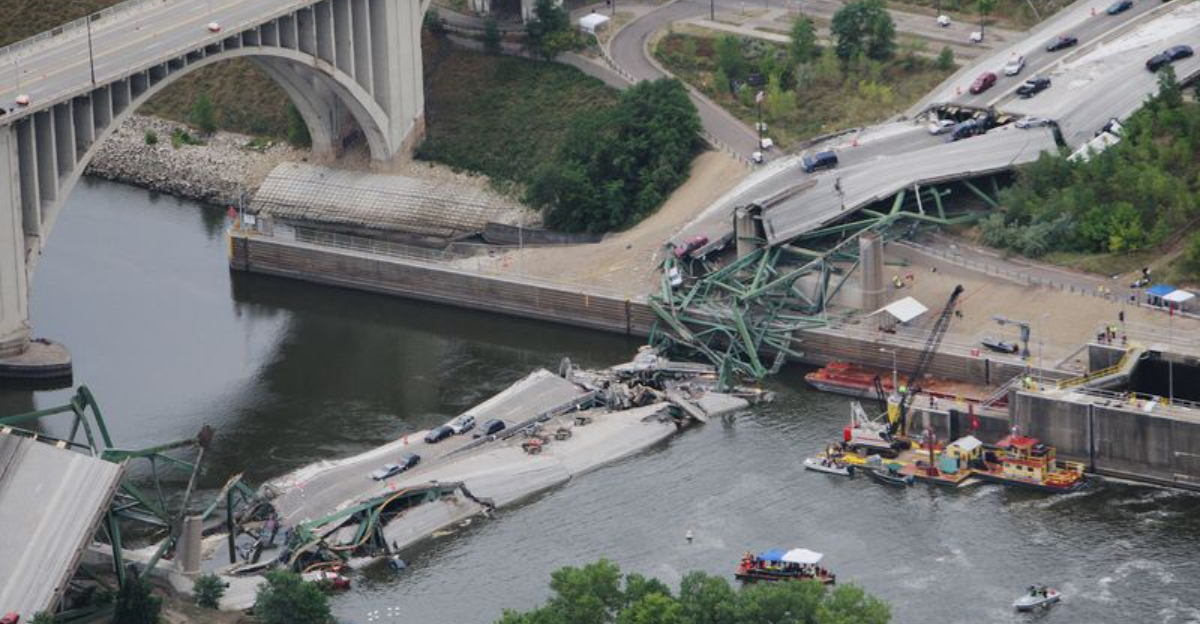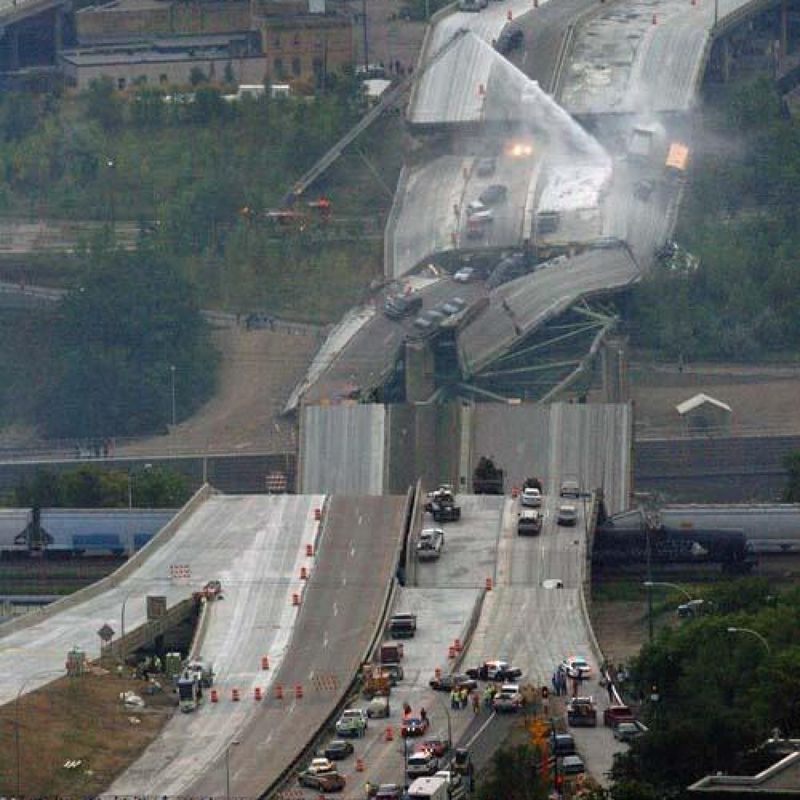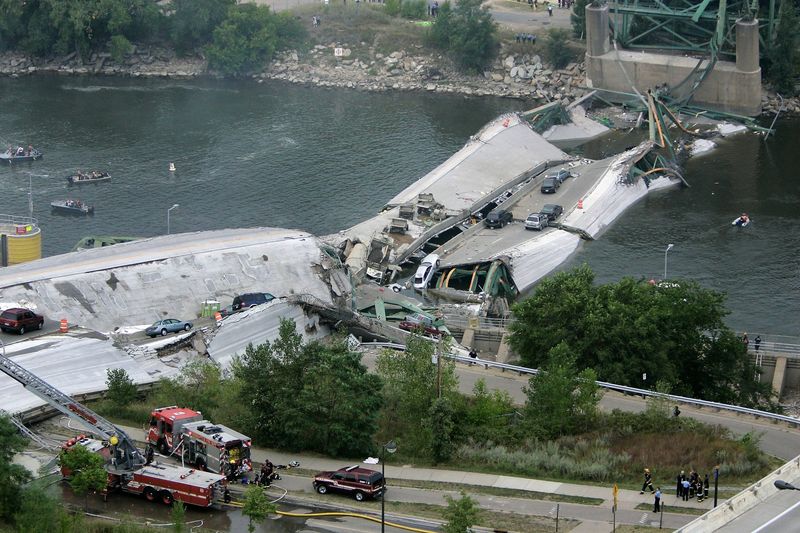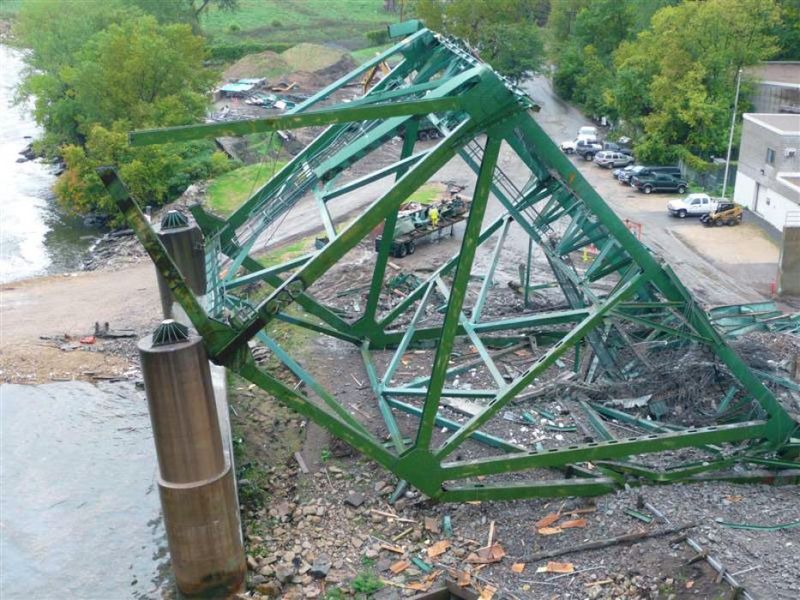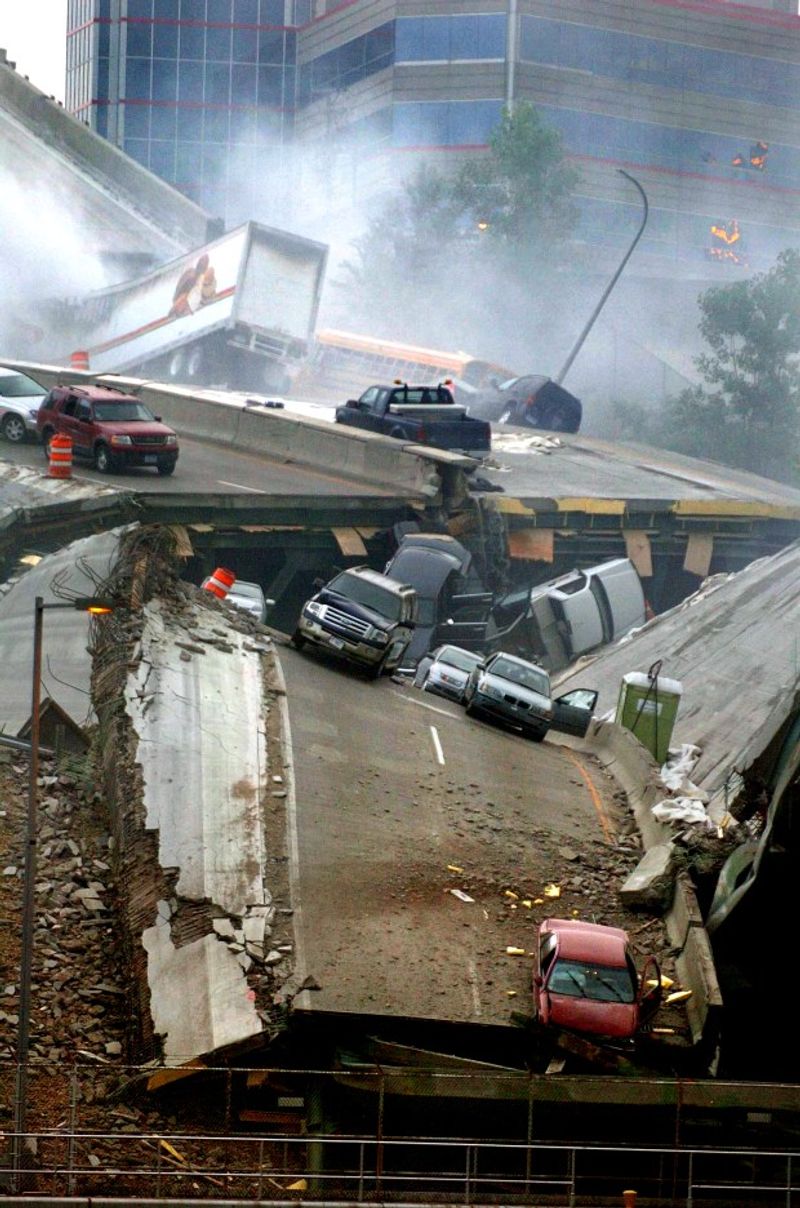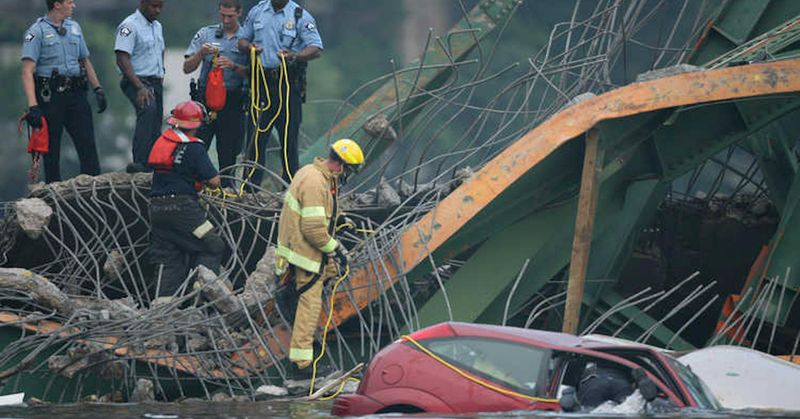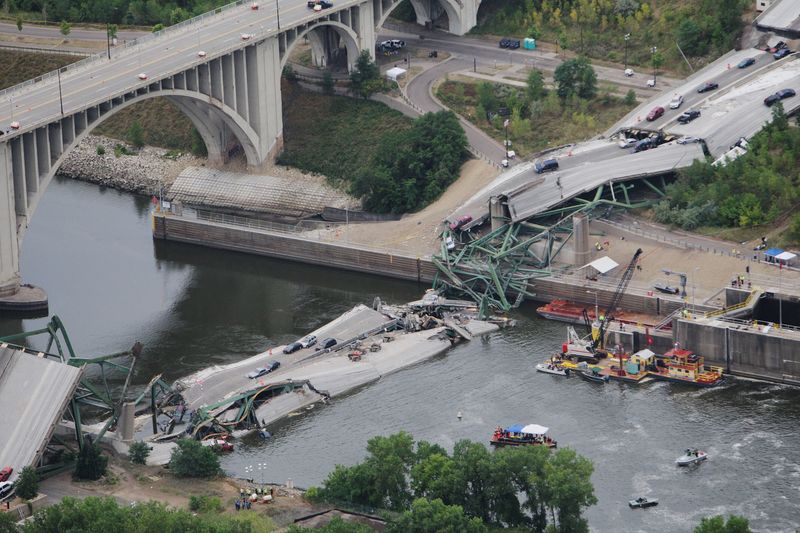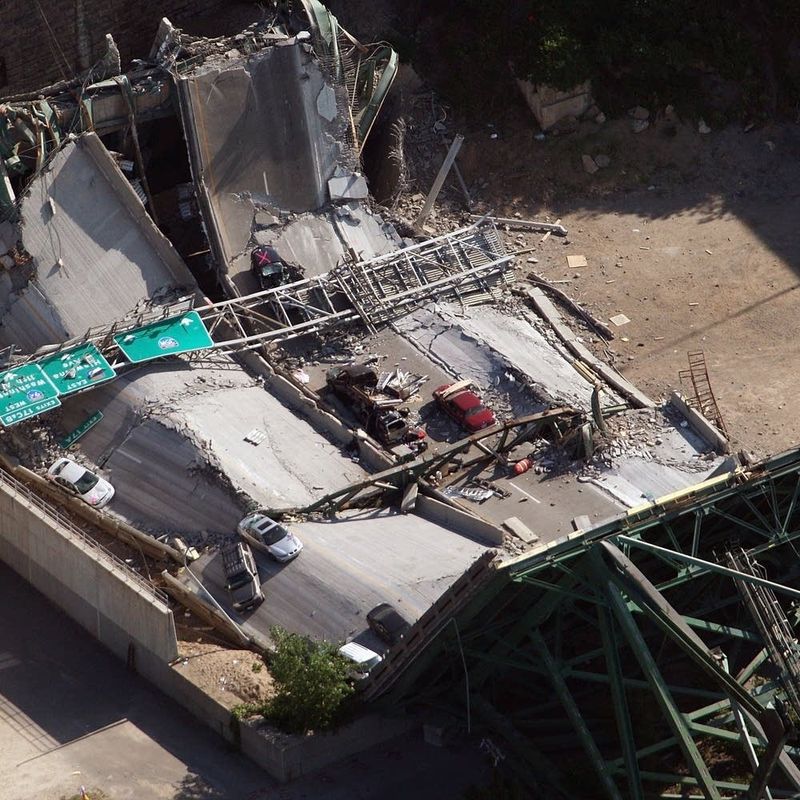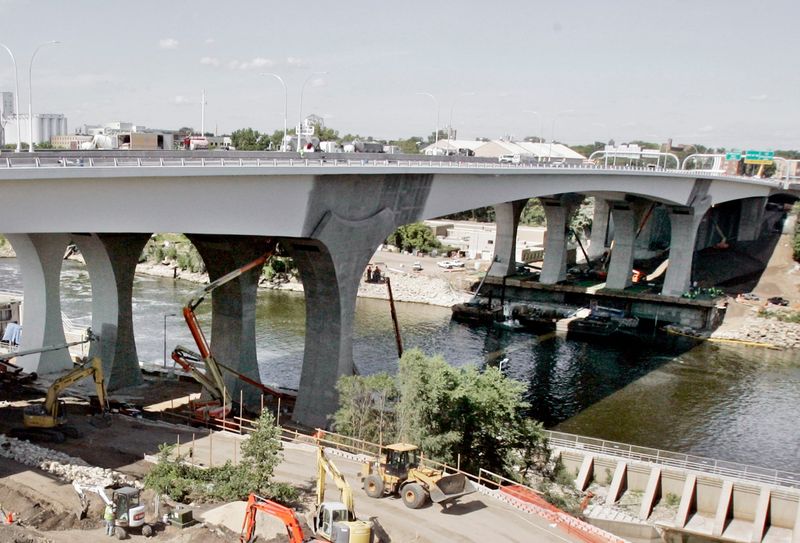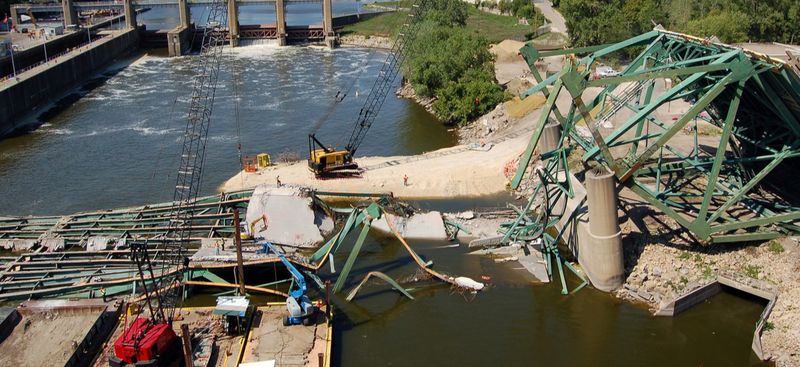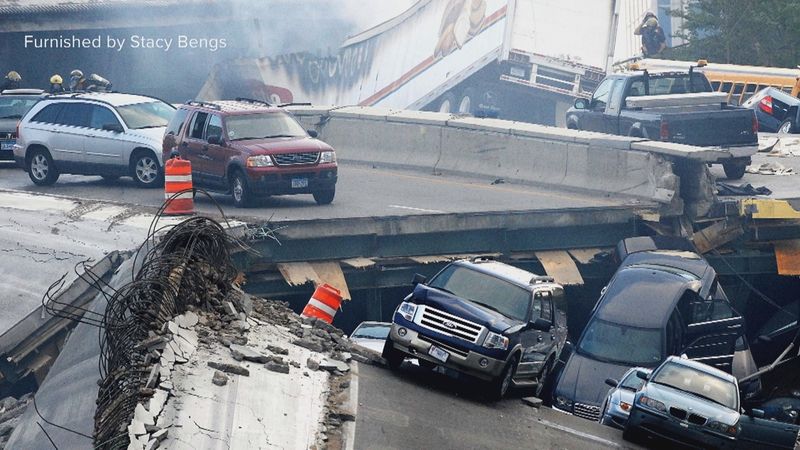In the heart of Minneapolis, Minnesota, the I-35W bridge was a vital artery for commuters and freight alike, symbolizing modern engineering’s promise.
On a typical August evening in 2007, this promise shattered as the bridge unexpectedly collapsed. With lives lost and communities shaken, the aftermath demanded answers and change.
This blog unfolds ten pivotal facts about the I-35W Mississippi River Bridge collapse, exploring its causes, impacts, and the enduring legacy it left on infrastructure policy and engineering standards.
1. Date and Time of Collapse
The I-35W bridge collapse occurred on August 1, 2007, at approximately 6:05 pm CDT. It was a warm summer evening, and the bridge was bustling with the usual rush-hour traffic.
The scene was like any other day in Minneapolis, with vehicles inching their way across the eight-lane steel bridge. But in a matter of seconds, the ordinary commute turned into a disaster.
The bridge gave way, sending cars and trucks plunging into the Mississippi River below. The time of the collapse was eerily significant as it coincided with the peak traffic period, magnifying the tragedy’s scale.
2. Location and Significance
Standing as a vital connection over the Mississippi River, the I-35W bridge was more than just steel and concrete. It was a lifeline for Minneapolis, accommodating thousands of vehicles each day.
This eight-lane steel truss arch bridge symbolized progress, linking downtown Minneapolis with the northern suburbs. As a crucial commuter and commercial corridor, its role in the city’s infrastructure was undeniable.
However, its importance also made the collapse more devastating. The sudden loss of such a critical structure emphasized the vulnerability of urban infrastructure. It was a wake-up call for the nation.
3. Sudden Structural Failure
During routine construction work, the I-35W bridge succumbed to an unexpected structural failure. Workers were scattered across the bridge, conducting resurfacing tasks, unaware of the impending doom.
Suddenly, the steel truss arch started to crumble, triggering a chain reaction of collapse. It was a catastrophic failure that took everyone by surprise. The collapse was not gradual; it was abrupt, leaving little time for anyone to react.
This unforeseen event raised urgent questions about the safety and stability of bridges everywhere. It was a clear reminder that infrastructure must be continually assessed and maintained for safety.
4. Casualties and Injuries
In the tragic collapse of the I-35W bridge, thirteen lives were lost, and around 145 individuals were injured. The chaos that ensued was immediate and overwhelming. Vehicles tumbled from the heights of the bridge into the river and onto the land below.
The suddenness of the event left no room for escape or preparation. Those who survived bore scars, both physical and emotional, of a day that began routinely but ended in calamity.
The human toll underscored the bridge’s significance not only as a structure but as a part of daily life deeply intertwined with personal and community narratives.
5. Immediate Rescue Efforts
Amidst chaos and destruction, immediate rescue efforts commenced with courage and urgency. First responders, alongside construction workers and citizens, rallied to save those trapped in vehicles and debris.
The Mississippi River, often a serene backdrop, became a frantic scene of rescue operations. Boats and helicopters descended upon the area, extracting survivors from precarious positions.
Medical teams provided on-the-spot care, stabilizing the injured before transport. The community’s response to the tragedy was swift and selfless, exemplifying humanity’s resilience and spirit. This collaborative effort became a testament to the bravery and dedication of all involved in the rescue operations.
6. Investigation and Findings
The collapse led to an exhaustive investigation by the National Transportation Safety Board (NTSB). After meticulous examination, they identified undersized gusset plates as the primary culprit.
These metal connectors, crucial for holding steel beams together, were inadequate for the bridge’s demands. The design flaw, hidden for decades, was exacerbated by additional stresses from construction equipment.
The NTSB’s findings shed light on a critical oversight in the bridge’s design, sparking widespread concern over infrastructure safety. This discovery highlighted the necessity for rigorous inspection protocols and design evaluations to prevent similar tragedies in the future.
7. Origins of Design Flaw
The design flaw at the heart of the bridge collapse can be traced back to its original construction in the 1960s. During this time, some gusset plates were unwittingly made only half as thick as necessary.
This oversight was a ticking time bomb, lying dormant until the bridge was under additional strain. The historical context of construction practices in the mid-20th century contributed to this fatal error.
The revelation of such an error decades later served as a sobering lesson on the importance of rigorous design standards and checks, emphasizing the need for constant vigilance in engineering practices.
8. Rebuilding the Bridge
In the wake of the collapse, the reconstruction of the I-35W bridge became an urgent priority. Engineers and construction teams embarked on building the I-35W Saint Anthony Falls Bridge, emphasizing safety and modern design.
The new bridge, completed in a record time of just over a year, opened on September 18, 2008. This feat of engineering incorporated cutting-edge technology and materials, reflecting lessons learned from the tragedy.
The swift rebuilding process demonstrated a commitment to restoring a critical infrastructure link. It also symbolized resilience and the community’s determination to move forward from the disaster.
9. Impact on Infrastructure Policy
The I-35W bridge collapse reverberated beyond Minneapolis, impacting national infrastructure policy. The tragedy sparked urgent calls for improved bridge inspection and maintenance protocols. It underscored the pressing need for increased funding to address aging infrastructure across the United States.
Policymakers and engineers alike recognized that outdated design standards needed modernization to ensure public safety. This incident catalyzed a shift in how infrastructure projects were approached, with a greater emphasis on preventative measures.
It served as a stark reminder that investment in infrastructure is not just a necessity but a priority for a safe and functional society.
10. Legacy and Safety Measures
The I-35W bridge collapse left an indelible mark on bridge engineering and safety protocols. Enhanced inspection requirements were implemented, ensuring that similar design flaws would not go unnoticed.
Load monitoring technologies became standard, allowing for real-time analysis of structural integrity. This tragedy highlighted the importance of continuous assessment and innovation in infrastructure safety.
As a defining moment in engineering history, it fostered a culture of vigilance and accountability. The lessons learned continue to influence how modern bridges are designed and maintained, serving as a poignant reminder of the human cost of engineering failures and the need for constant improvement.
